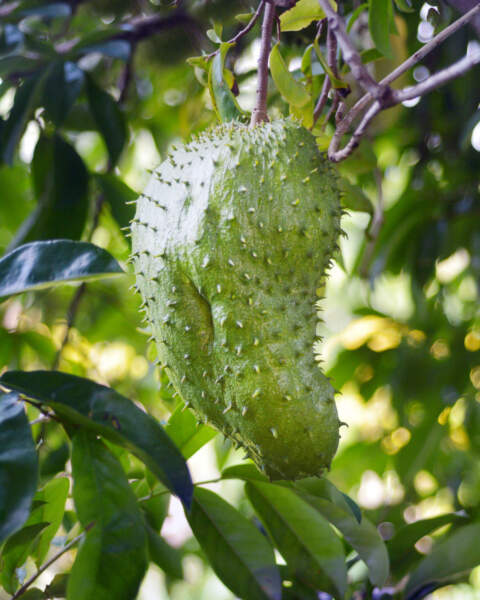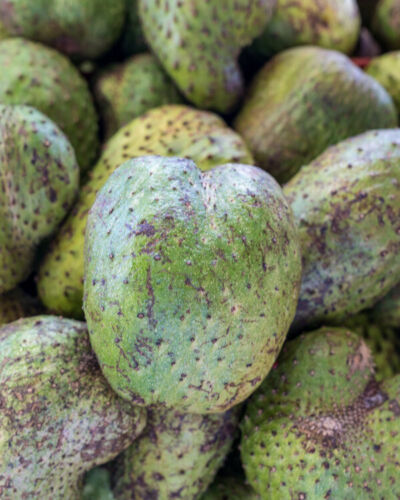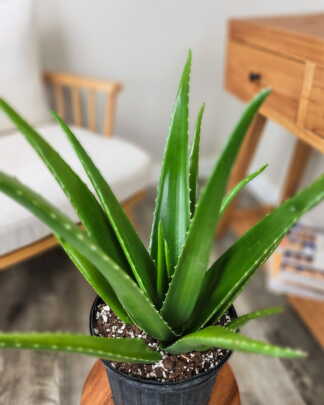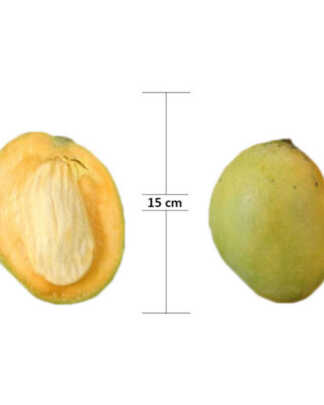Description
Grow your own Delicious Exotic Soursop Fruit
oursop trees (Annona muricata) are tropical fruit trees known for their delicious, unique-tasting fruit. Also known as graviola, guanábana, or Brazilian paw paw, soursop trees are native to the tropical regions of the Americas and thrive in warm, humid environments. Here’s an in-depth guide on how to care for these remarkable trees, from planting to harvesting.
Soursop trees can grow up to 30 feet tall, with large, glossy, dark green leaves. The fruit is oval or heart-shaped, covered in a spiky green skin, and can weigh up to 15 pounds. Inside, the flesh is white, creamy, and fibrous, with a sweet and tangy flavor.
Caring for your Soursop
These trees prefer tropical climates and are best suited for USDA zones 10-11. They can tolerate temperatures down to 30°F for short periods but thrive in temperatures between 70-80°F. High humidity is essential for optimal growth.
Light
Choose a location with full sun exposure. Soursop trees need at least 6-8 hours of direct sunlight daily to produce healthy fruit. Ensure the site is sheltered from strong winds, as the tree and its fruit can be damaged easily.
Soil
oursop trees prefer well-draining, sandy loam soil with a pH between 5.5 and 7.0. They are somewhat tolerant of poor soil conditions but will perform best in rich, fertile soil.
Water
Soursop trees require consistent moisture but should not be waterlogged. Water the tree deeply once or twice a week, depending on rainfall and soil type. The goal is to keep the soil evenly moist but not saturated. Overwatering can lead to root rot and other fungal diseases.
Fertilizing
For the first year, feed young soursop trees with a balanced fertilizer (10-10-10) every 2-3 months. Start with a small amount and gradually increase as the tree grows.
After the first year, switch to a high-potassium fertilizer (5-8-12 or similar) to support fruit development. Apply fertilizer three times a year: at the start of the growing season, mid-summer, and early fall. Avoid over-fertilizing, which can lead to excessive vegetative growth at the expense of fruit production.
Pruning
In the early years, prune soursop trees to establish a strong structure. Remove any weak, crossing, or damaged branches. Aim to create an open canopy to allow sunlight and air to penetrate, which helps reduce disease risk. Prune mature trees annually to remove dead or diseased wood and to maintain shape and size. Light pruning after harvesting can also encourage new growth and improve air circulation.
Pest and Disease Management
Common pests affecting soursop trees include scale insects, mealybugs, and fruit flies. Regularly inspect your tree for signs of infestation. Natural predators like ladybugs and lacewings can help control pest populations. In severe cases, insecticidal soap or neem oil can be used.
Soursop trees are susceptible to fungal diseases such as anthracnose and root rot. Ensure proper air circulation by spacing trees appropriately and pruning regularly. Avoid overhead watering to reduce leaf wetness. If fungal issues arise, copper-based fungicides can be applied.
















Kimberly S. (verified owner) –
Totally excited to see plants arrive as they should. This tree, as well as the other trees were in great condition. I will be returning for more purchases.
Mike Olson (verified owner) –
Looks great hopefully will continue to grow and fruit
Sally (verified owner) –
Beautiful Tree!